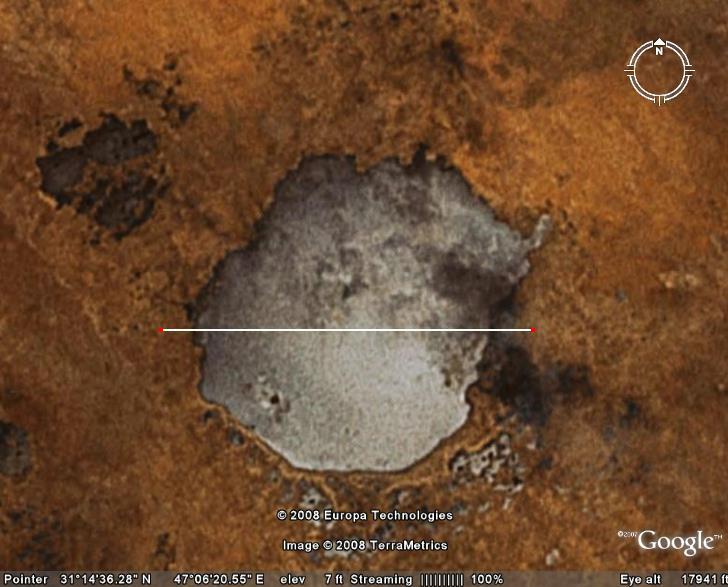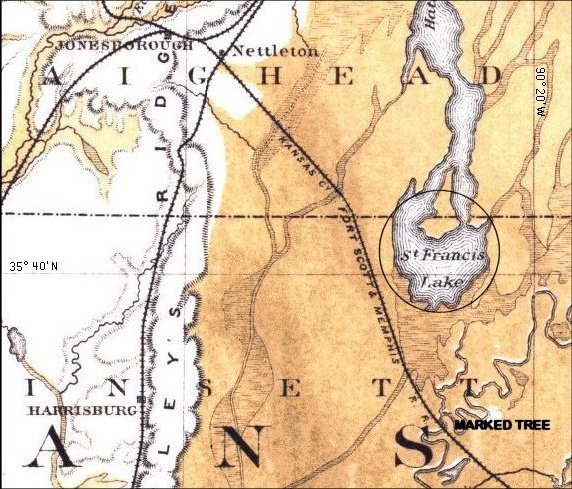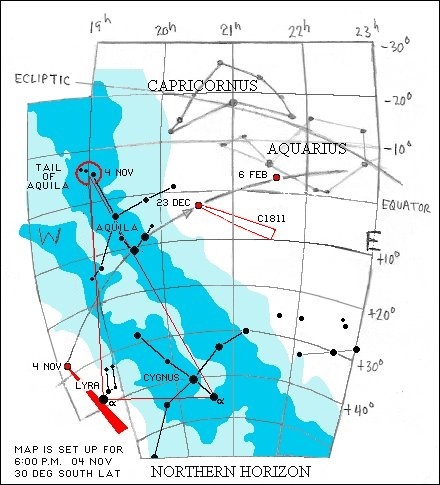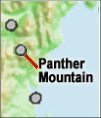|
This 1994 quote by Kenji Satake alludes to a meteorite impact caused tsunami.
"Abnormal sediments in Texas and Mexico have been interpreted to be
tsunami deposits, apparently from a gigantic meteorite impact near
Yucatan at the Cretaceous/Tertiary boundary [Bourgeois, et al, 1988](5),
when a mass extinction took place. Study of deposits from recent
tsunami events will provide an important calibration to quantify
such geological studies." [Emphasis added.]
[Added 11 Dec 2005.]
A modest sized meteorite crater, say a mile or so in
diameter, located in a swampy alluvial plain (such as that
associated with the Mississippi river back in the 1800s) might be
rapidly obscured from casual view by liquefaction, and tsunami-like
river excursions associated with impact aftershocks.
[Added 07 Dec 2005.]
With reference to obscured craters in aluvial plains: A few years back,
in one of Saddam Hussien's public works projects, a swampy area in
southern Iraq was drained. In so doing, what appears to be a submerged
meteorite crater was found that is thought to date to about 2350 BC.
It is being hypothesized that the meteorite impact may have caused the
demise of some early bronze age (historical) civilizations.
See the
Cambridge Conference Network Summary.
[Added 07 Dec 2005.]
The author of this webpage used
Google Earth to search for the exposed crater (Umm al Binni
Lake) which, according to one source, is at 31 08 58 North 47 04 44
East, but he was unable to discern its presence. It's reported to be about
45 miles south of Al'Amarah, Iraq, and 10 miles northwest of the confluence
of the Tigris and Euphrates rivers. The Google Earth coordinates of Umm al
Binni Lake are 31 14 26.5 North, 47 06 16 East. The lake is 28 miles
(45 km) northwest of the confluence of the Tigris and Euphrates rivers
and 42 miles (67 km) south (about 190 degrees CW from north) of
Al'Amarah. See Master and Woldai (2004) (6) [Added 04 Jul 2008.]

GoogleEarth satellite image of Umm al Binni Lake in southern Iraq
The ruler line represents a distance of two miles.
* * *
Where's the New Madrid Event Crater?
Readers may need to keep a salt shaker nearby.
The first jolt of the 1811 New Madrid quakes is thought to have been
centered near Marked Tree, AR. The region of Marked Tree would, therefore,
be a logical place to search for a meteorite impact structure.
Just north of Marked Tree, AR there is a swampy region called the Saint
Francis Sunk[en] Lands. (The 1811-12 earthquakes are said to be responsible
for the sinking of the lands.) This particular swamp is fed by the Saint
Francis river.
In 1889, in the middle of the swamp, there there was a body of water
called St. Francis Lake. At that time it had a circular southern border
(which doesn't look like an oxbow feature) and a centrally located
island. The island is now known as Hatchie Coon Island.
The following map shows the features just discussed. Jonesboro, AR is
located in the upper left corner of the map, and the location for Marked
Tree, AR is annotated in the southeast corner.

Saint Francis Lake North of Marked Tree, AR, USA, 1889
This abbreviated map is from a
Northeast AR - Southeast MO map (Big!)
Original map is at
University of Alabama Map Library. [Third page, 23rd map.]
To see an outline of the former St. Francis Lake overlaid
on a 1956 topo map of the area, goto
St. Francis Lake.
The author recommends, if it hasn't been done yet, that some organization
versed in meteorite impact structures examine the region of the former St.
Francis Lake to see if there are any indicators there consistent with
(or inconsistent with) a large meteorite impact. Anyone having
knowledge that this has already been done, whatever the final verdict,
please inform the author.
[Added 10 Dec 2005.]
One such (meteorite yes/no) indicator would be the forestry history of
the area. For example: If there are any trees within the confines of the
former St. Francis Lake and/or Hatchie Coon Island which were alive and
standing before, during, and after the winter of 1811-1812, then that
would be constitute evidence that St. Francis Lake was NOT caused by a
meteorite impact. On the other hand, if all the trees in the area came
to be there only after 1811, and not as a result of clear cutting and
replanting, then that would suggest a need to examine other possible
meteorite indicators. The author solicits inputs from persons who have
knowledge of publicly available written or photographic information on
this topic. [Added 26 Feb 2006.]
See a report [under construction] regarding a
field trip to the Hatchie Coon Island area to make initial assessments
of the above hypothesis.
[Added 14 Jan 2007.]
The Great Comet of 1811
In 1893 Norbert Herz reported what seems to have been evidence of a
significant pertubation to the orbit of the Great Comet of 1811(7).
Quoting Herz: "In general, if a comet is not perturbed by external forces,
only one orbit, be it parabolic, elliptic, or hyperbolic, can be derived
from the observations [of the comet]. But a single curve cannot be found
for the comet of 1811 which will satisfy the observations."
Working from a total of 984 observations, Herz published monthly simple means
of the errors (between calculated and observed positions) but didn't
furnish indicators of maximum errors or of variances. The author
hopes to obtain a copy of the observations in order to produce a clearer
assessment of the comet's path. The idea is to see if Burchell's 04 Nov
1811 comet observation from South Africa (See second paragraph of this
article.) is consistent (or not) with vetted observations of C1811 F1. Secondarily,
it is desirable to look for a probable cause of the pertubation to
the Great Comet's orbit. [Added 12 Dec 2005.]
One possibile explanation for the fact that a single curve couldn't
be found for C1811 F1's orbit is that the comet fissioned and that
one or both of the fission products moved off in different orbits from the
original. John Kezys calls our attention to a report of such an event.
He says, "As Napoleon marched into Russia with an army of seven hundred
thousand strong, the Great Comet [of 1811] developed a tail one hundred
million miles long. Following initial victories Napoleon overextended
himself. After the invasion of Moscow he ran short of supplies and the winter proved
unforgiving. Hundreds of thousands died while the comet performed
frightening acrobatics by splitting in two."(8) [Added 12 Dec 2005.]
References
(1) Allan W. Eckhert,
PANTHER ACROSS THE
SKY - Tecumseh and the New Madrid Earthquake, December 16, 1811.
(2) Tecumseh 'The Panther Passing Across' Shawnee Warrior.
Was at: http://www.geocities.com/SouthBeach/Cove/8286/warrior.html. No longer
available online.
(3)
Nicholas Roosevelt's 1811 Steamboat New Orleans - Tecumseh and the
Earthquake. The author quotes material from Thomas McKenney's
History of the Indian Tribes of North America, (1838).
(4) A.C. Johnson and E.S. Schweig, (PDF)
The -Enigma of the New Madrid Earthquakes of 1811-1812.
Annual Reviews Earth Planet, 24, 339-84, 1996.
An abbreviated HTML version of this document is at
http://www.showme.net/~fkeller/quake/lib/enigma.htm .
(5) Bourgeois, J., T. A. Hansen, P. L. Wiberg, and E. G. Kauffman,
"A tsunami deposit at the Cretaceous/Tertiary boundary in Texas,"
Science, 241, 567, 1988.
(6) Sharad Master and Tsehaie Woldai (2004), "The Umm al Binni Structure,
in the Mesopotamian Marshlands of Southern Iraq, as a Postulated Late
Holocene Meteorite Impact Crater: Geologic Settings and New Landsat ETM+
and ASTER Satellite Imagery," Economic Geololgy Research Institute
Information Circular No. 282, Hugh Allsopp Laboratory, University of the
Witwatersrand, Johannesburg, SA.
See: (PDF)
http://www.itc.nl/library/Papers_2004/tech_rep/woldai_umm.pdf
(7) Herz, Norbert, "Remarks on the orbit of the great comet of 1811 and
on comet's tails,"
The Observatory, 16, 98-102 (1893).
(8) Kezys, John, "Napoleon's Comets," Orbit, Feb 1996, page 27.
See: http://www.rasc.ca/nl/hamilton-199603.pdf. [URL has changed
or article is no longer available]
Kezys's source on this was Olson, Roberta, Fire and Ice, A History of
Comets in Art, Walker, ISBN 0802777838, page 76, (1985).
Related Links
How Dangerous are Earth-Crossing Objects?
[Added 02 Jan 2006.]
The New Madrid Earthquakes of 1811-12 - The City of New Madrid, Missouri
[Added 30 Jan 2012.]
Kalopin's Legacy: The Great
Comet & Quake of 1811 - Tony Hood
|
|



